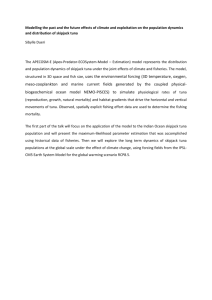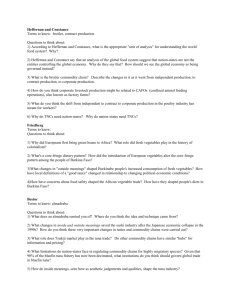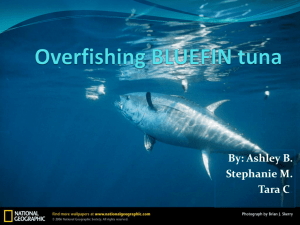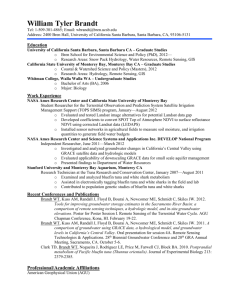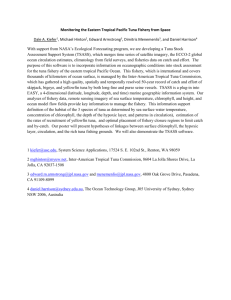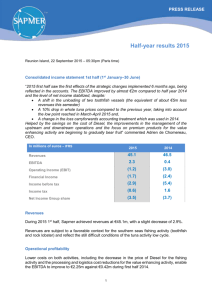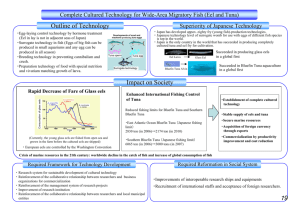bluefin tuna powerpoint final
advertisement
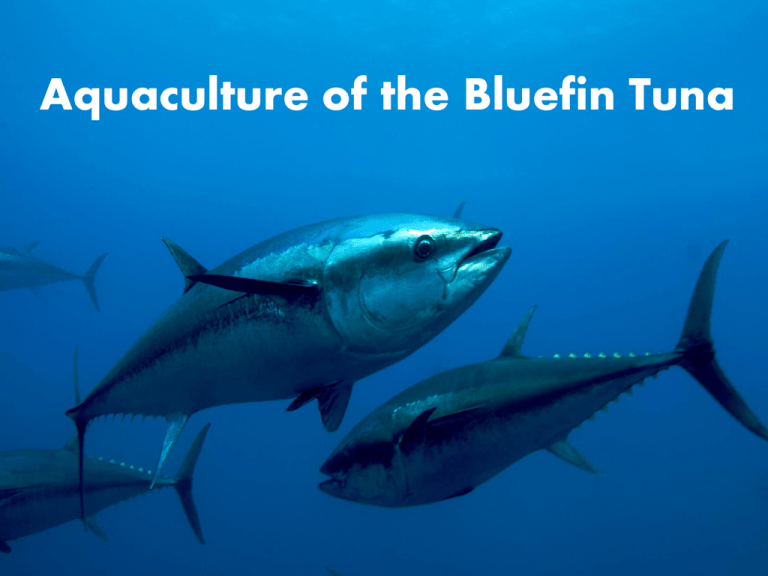
Aquaculture of the Bluefin Tuna Taxonomy Genus Thunnus Species: Maccoyii, Orientalis, Thynnus Economic importance, market price, market locations, country The Atlantic bluefin is a highly sought-after delicacy for sushi in Asia A single fish has sold for around 1.8 million dollars The largest driver of demand for bluefin tuna is the market in Japan. Life cycle and larval stages Scientists in Japan achieved completion of the life cycle under controlled conditions after 32 years. Not achieved on commercialscale, capture based aquaculture has developed significantly. The larvae are ~3mm when they hatch and grow at a rate of 1mm per day after that. Female bluefins reach sexual maturity at about 5 years old. Reproduction in captivity Spawning occurs from April to June in the Gulf of Mexico and from May/June to August in the Mediterranean. Sexual maturity of Atlantic bluefin tuna is reached at the age of 5-8 years, while Eastern Atlantic maturity is reached at 4-5 years. Bluefin tunas may release from 5 to 30 million eggs Spawning occurs in open water close to the surface and in areas where survival expectations are highest. Production Methods Bluefin tuna farming based on stocking of wild-caught individuals Purse seine is the most effective capture system Wild tunas are caught at different life-cycle stages Fish finders and sonar are used to detect Bluefin tuna schools They are kept alive and transferred to towing cages usually by sewing the nets together, difficult and inefficient Tugboats used to transfer tuna in the towing cages to farm site. Low transportation speed critical, cause for long trips In Mediterranean, the companies start stocking their tuna cages in May/June Mediterranean tuna farms use circular ring type open-sea floating net cages. Size of cages vary from 30-90m in diameter, with net depths ranging from 1530m Farming cages designed to contain smaller tuna specimens for long periods of time. Fattening season is linked to market demand/opportunity Quotas put in place by ICCAT (International Commission for the Conservation of the Atlantic Tuna) to limit the number of tuna harvested Feeds and Feeding Bluefin tuna are fed with a mixed diet composed of a variety of small pelagic species Proportion and volume of feed varies among the farms of different countries The Mediterranean countries engaged in the tuna farming obtain bait fish from locally fished stocks Fed 1-3 times a day with a mixture of defrosted bait fish When the tuna are not fed at own pleasure, daily input varies from 2-10% of the estimated tuna biomass Difficult to record initial weight or length measurements without losing the tuna in the handling process, little information about food intake so overfeeding is a common practice. Feed conversion ratios are 15-20:1 for large specimens and 10-15:1 for smaller fish They maintain a high body temperature and their constant movement implies a high energy demand, resulting in 5% of total energy input is used for body growth Water chemistry and environmental requirements in culture Spawning has only been recorded where the waters are 25-30C Advantages and disadvantages of the species Disadvantages: Advantages: Long life before they can be High demand harvested A closed life-cycle has not yet been achieved for practical use There is not yet an effective feeding practice High market price They are becoming extinct, so aquaculture is beneficial Mediterranean area benefits by making huge financial investments that have allowed the modernization of equipment

